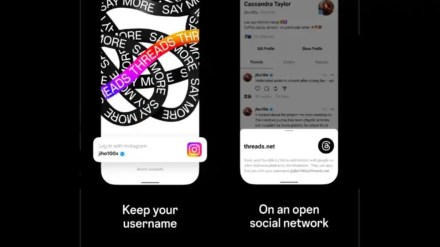By Siddharth Pai
On July 5, Facebook/ Meta released a competitor app to Twitter called Threads. Threads is a take-off from Meta’s Instagram, a very successful photo sharing social media app. Instagram is sort of a simplified version of Facebook with a focus on mobile use and visual sharing. Like other social networks, users interact with other users by following them, letting others follow them, liking, tagging, commenting, and privately messaging. You can also save photos on Instagram. Notably, it is markedly more popular among younger users than Facebook, its stable mate at Meta.
According to Instagram “Our vision with Threads is to take what Instagram does best and expand that to text, creating a positive and creative space to express your ideas. Just like on Instagram, with Threads you can follow and connect with friends and creators who share your interests…… Posts can be up to 500 characters long and include links, photos, and videos up to 5 minutes in length.” (bit.ly/43op7Ak)
Other alternatives to Twitter have been mushrooming up in the last several months. The first wave was after Donald Trump, the previous US President, was banned from Twitter in the wake of the January 6, 2021 attacks on the US Capitol. He and his supporters then formed “Truth Social”. Evidently, its users can make “truths”, whatever that means, and share those with others in “re-truths”. Evidently, its user base had grown to around 2 million users by June last year. (bit.ly/44HYuau). Others also exist, such as Mastodon (on whose engine Truth Social was built) as well as Reddit, Tumblr, and maybe even LinkedIn. (bit.ly/3Dm0GIY)
Speaking of user base, Threads broke all records to become the fastest-growing app ever, gaining over 100 million users in less than a week. The Twitter rival dethroned ChatGPT, the previous record holder, which, though not quite a micro-blogging app, earned 100 million users in just two months. Before that, TikTok held the record, having reached the mark in nine months.
Meta is one of the world’s largest social media companies, so it would have significant resources to put into the development and promotion of a new platform. However, the actual outcome would be contingent on several key elements
First off is the Unique Selling Proposition or USP. Threads would need to offer something truly distinct as a USP from Twitter to attract users (and more importantly, hold on to active users). This could be unique features, better functionality, superior content moderation, or privacy protection. If the platform is too similar to Twitter, users might not see a reason to switch and stay switched. Meta would need to convince users to not only try the new platform but also to keep using it over the long term. This would be a challenge, as people tend to be resistant to changing their habits and may be loyal to Twitter. Onboarding high-profile influencers or celebrities could help draw users.
Those living in glasshouses shouldn’t throw stones, it is said. Like Twitter, Meta has faced significant criticism related to issues like misinformation, privacy, and antitrust concerns. If these issues are not addressed, they could negatively impact the new platform’s acceptance.
One act that is extremely difficult to pull off is to “monetise” a social media platform without alienating users. This is industry speak to say that keeping advertisers interested doesn’t always run parallel with keeping users interested, and vice versa. If Meta’s new platform can offer a compelling value proposition to businesses, it could attract advertisers and generate revenue. But advertisers have been known to boycott social media platforms in the past due to the level of misinformation and/or hatred that is spread on a particular platform. And users have been known to boycott platforms where they aren’t allowed to freely speak their mind. If Meta can find a balance that provides revenue while keeping users happy, the platform will be more likely to succeed.
Also, like Twitter, Meta is subject to regulation in many countries, and if Threads raises new regulatory concerns, it could face obstacles to its success. The regulatory environment could also affect the platform’s ability to operate in certain countries. It has debuted in 31 languages and in over 100 countries (India included), which is a testament to Meta’s sheer scale and strength, as arguably the world’s largest social media giant. One of Meta’s strengths is its broad ecosystem of apps and services, including Instagram (from where Threads takes off) and WhatsApp. If the new platform can be successfully integrated into this ecosystem, it could benefit from network effects and cross-promotion.
Entering an established market with powerful incumbents is always challenging, even for a company as large as Meta. But maybe it’s not worth casting a horoscope when it comes to Threads’ trajectory. Organic engagement is high now, so it makes sense for advertisers and content creators to engage while they can. If the user base has grown faster than any other social network in history, it is reasonable to expect that the speed of its monetisation will also be high, which, of course, will set Threads immediately upon the highwire of balance between continued user engagement and advertising interest.
While I do have a Twitter account, I deleted all my posts a long time ago and do not use it. This was part of a larger play to minimise my social media use (I am off Facebook as well). However, I am a keen amateur photographer, so one of the few apps I use is Instagram to post some of my pictures to a closed group of people. Maybe it is now time to look into a Threads account.
The author is Technology consultant and venture capitalist
By invitation
